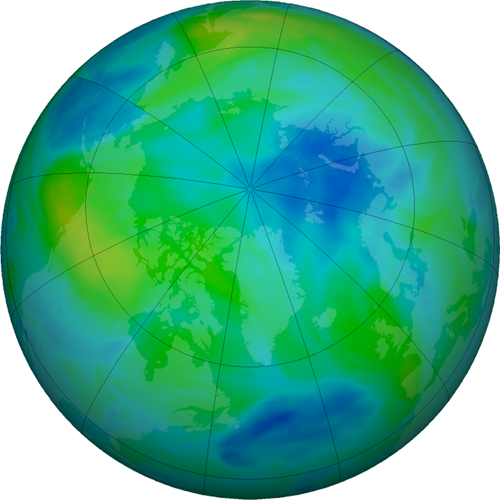Protecting the ozone layer is delivering vast health benefits
Montreal Protocol will spare Americans from 443 million skin cancer cases
Oct 6, 2021 - by David Hosansky
Oct 6, 2021 - by David Hosansky
An international agreement to protect the ozone layer is expected to prevent 443 million cases of skin cancer and 63 million cataract cases for people born in the United States through the end of this century, according to new research.
The research team, by scientists at the National Center for Atmospheric Research (NCAR), ICF Consulting, and U.S. Environmental Protection Agency (EPA), focused on the far-reaching impacts of a landmark 1987 treaty known as the Montreal Protocol and later amendments that substantially strengthened it. The agreement phased out the use of chemicals such as chlorofluorocarbons (CFCs) that destroy ozone in the stratosphere.
Stratospheric ozone shields the planet from harmful levels of the Sun’s ultraviolet (UV) radiation, protecting life on Earth.
To measure the long-term effects of the Montreal Protocol, the scientists developed a computer modeling approach that enabled them to look to both the past and the future by simulating the treaty’s impact on Americans born between 1890 and 2100. The modeling revealed the treaty’s effect on stratospheric ozone, the associated reductions in ultraviolet radiation, and the resulting health benefits.
In addition to the number of skin cancer and cataract cases that were avoided, the study also showed that the treaty, as most recently amended, will prevent approximately 2.3 million skin cancer deaths in the U.S.
“It’s very encouraging,” said NCAR scientist Julia Lee-Taylor, a co-author of the study. “It shows that, given the will, the nations of the world can come together to solve global environmental problems.”
The study, funded by the EPA, was published in ACS Earth and Space Chemistry. NCAR is sponsored by the National Science Foundation.
Scientists in the 1970s began highlighting the threat to the ozone layer when they found that CFCs, used as refrigerants and in other applications, release chlorine atoms in the stratosphere that set off chemical reactions that destroy ozone. Concerns mounted the following decade with the discovery of an Antarctic ozone hole.
The loss of stratospheric ozone would be catastrophic, as high levels of UV radiation have been linked to certain types of skin cancer, cataracts, and immunological disorders. The ozone layer also protects terrestrial and aquatic ecosystems, as well as agriculture.

Policy makers responded to the threat with the 1987 Montreal Protocol on Substances that Deplete the Ozone Layer, in which nations agreed to curtail the use of certain ozone-destroying substances. Subsequent amendments strengthened the treaty by expanding the list of ozone-destroying substances (such as halons and hydrochlorofluorocarbons, or HCFCs) and accelerating the timeline for phasing out their use. The amendments were based on input from the scientific community, including a number of NCAR scientists, that was summarized in quadrennial Ozone Assessment reports.
To quantify the impacts of the treaty, the research team built a model known as the Atmospheric and Health Effects Framework. This model, which draws on various data sources about ozone, public health, and population demographics, consists of five computational steps. These simulate past and future emissions of ozone-destroying substances, the impacts of those substances on stratospheric ozone, the resulting changes in ground-level UV radiation, the U.S. population’s exposure to UV radiation, and the incidence and mortality of health effects resulting from the exposure.
The results showed UV radiation levels returning to 1980 levels by the mid-2040s under the amended treaty. In contrast, UV levels would have continued to increase throughout this century if the treaty had not been amended, and they would have soared far higher without any treaty at all.
Even with the amendments, the simulations show excess cases of cataracts and various types of skin cancer beginning to occur with the onset of ozone depletion and peaking decades later as the population exposed to the highest UV levels ages. Those born between 1900 and 2040 experience heightened cases of skin cancer and cataracts, with the worst health outcomes affecting those born between about 1950 and 2000.
However, the health impacts would have been far more severe without the treaty, with cases of skin cancer and cataracts rising at an increasingly rapid rate through the century.
“We peeled away from disaster,” Lee-Taylor said. “What is eye popping is what would have happened by the end of this century if not for the Montreal Protocol. By 2080, the amount of UV has tripled. After that, our calculations for the health impacts start to break down because we’re getting so far into conditions that have never been seen before.”
The research team also found that more than half the treaty’s health benefits could be traced to the later amendments rather than the original 1987 Montreal Protocol. Overall, the treaty prevented more than 99% of potential health impacts that would have otherwise occurred from ozone destruction. This showed the importance of the treaty’s flexibility in adjusting to evolving scientific knowledge, the authors said.
The researchers focused on the U.S. because of ready access to health data and population projections. Lee-Taylor said that the specific health outcomes in other countries may vary, but the overall trends would be similar.
“The treaty had broad global benefits,” she said.